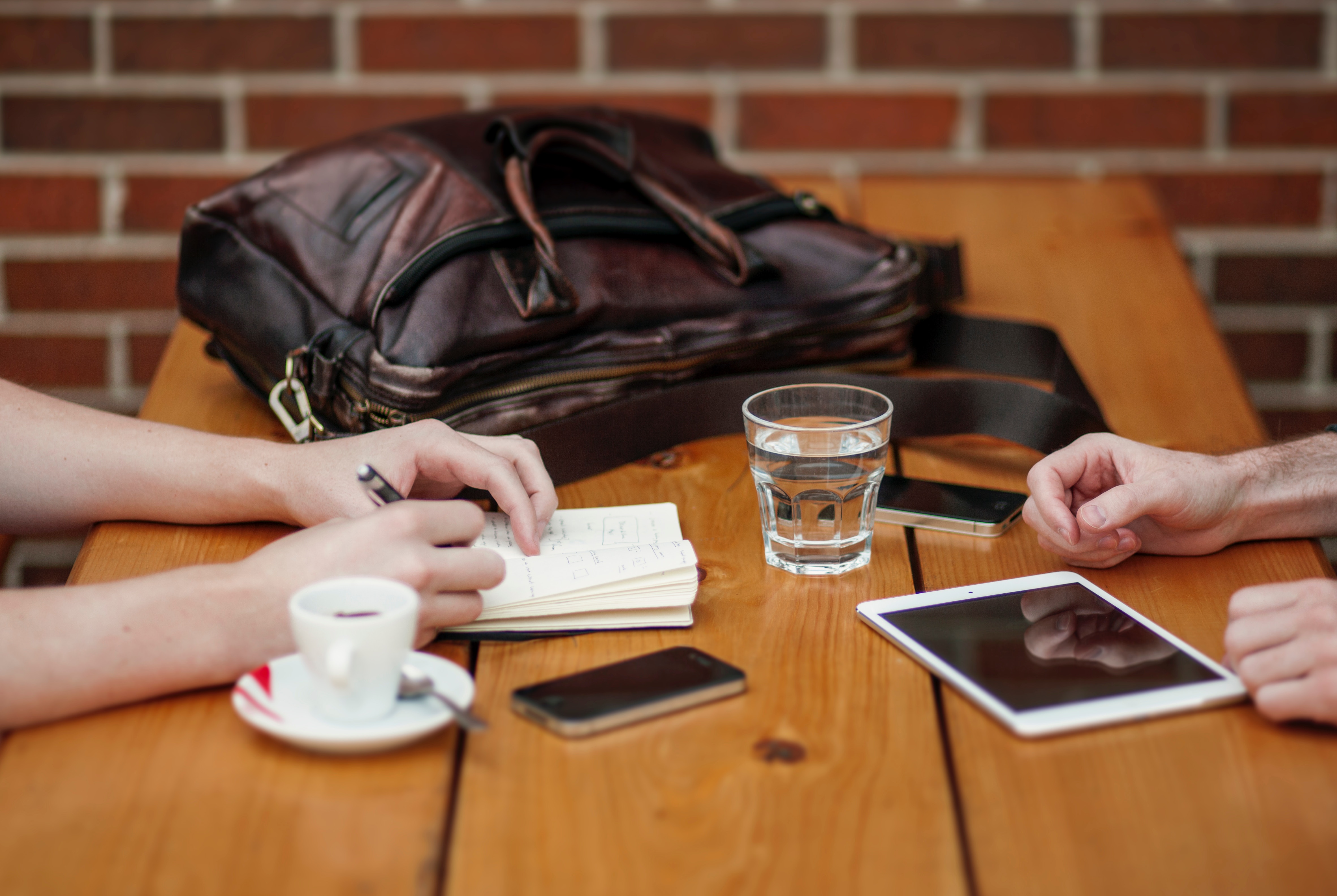
Workshops work. Fact. I know I’m biased as it’s my job as Planner at Access, but we have many clients who I’m sure would back me up. We’ve run in excess of 50 problem solving workshops in the past few years - and they have all delivered.
You may not realise a workshop is the answer
Often, when a client approaches us, they don’t realise a workshop is what their business needs.
They may come to us looking for a website, or a full marketing campaign, but actually have a bigger underlying business problem they’re unaware of. Or, a client knows they want a workshop, often to move an existing plan forward, and end up identifying opportunities they had not considered before then.
Workshops identify these problems and resolve them.
Seeing plans, and confidence in ideas, grow through the course of a workshop is the most rewarding part.
“I’ve seen clients enter the room with a fixed idea and leave thinking so differently and excited about the possibilities of taking the original plan so much further in an alternative direction.”
Why you should consider a workshop -
From defining brand strategy to agreeing a website structure and functionality, workshops are the perfect format to facilitate collaboration and fast track decision making.
- With multiple people involved in a project, workshopping facilitates collaboration and decision making.
- It focuses thought, aligns expectation and identifies priorities.
- Highlights where the challenges to progress lie, and where more investigative conversations or research are required.
- It accelerates the idea to brief formulation process brilliantly.
Let’s look at what ingredients go into a good discovery workshop and how you can start running your own successful workshops for your clients.
“From defining brand strategy to agreeing a website structure and functionality, workshops are the perfect format to facilitate collaboration and fast track decision making.”
Ingredient One: preparation
![]()
As a workshop facilitator, it’s important to take a neutral stance and work hard to plan and structure the session to involve, and get the most benefit out of, all the types of people taking part.
One of the first things I think about are people's job roles. What experience are they bringing to the project? What kind of discussion would engage them? Then, I choose exercises that effectively draw out the most valuable contributions from everyone in the room. So, for this to work you need to find out well in advance who’s attending the workshop and plan accordingly.
TOP TIP: Find out who is attending, what their role is and their level of expertise.
Thorough preparation gives your client confidence that you understand what they are trying to achieve, that you understand their business so they don’t have to waste time bringing you up to speed.
As facilitator I always take time to understand the client’s business objectives prior to a workshop, research their market landscape and I’m aware of the audiences that they’re talking to. Therefore, I am adequately informed to lead certain points of discussion in order to tease out the insight we need to shape a well considered proposal.
We have a bank of tried and tested workshop exercises and session structures and we know which are most suitable for each workshop to ensure we get the most out of the session.
The example below shows the type of resource we regularly use during workshop sessions with clients.
Ingredient Two: Identify people’s roles

During a workshop, clients and agencies have different roles, but ultimately need to do two things; stay open minded and embrace the journey. It’s very often the case that a client is amazed by how much we’ve covered in a day. Let’s take a look at what people should be doing in the room and offer some guidance.
As a facilitator -
- Suggest a room with access to fresh air or air con, good lights and lots of wallspace
- Bring all of your visual cues, request a flip board and a screen
- Maintain a logical workflow - be clear on the session structure and explain what you’re trying to achieve and list specifically what the outputs will be
- Be alert and focussed - initiate discussions and know when to intervene in order to bring the discussion back on course
- Provide visual references to aid debates
- Capture all the points raised - pin the sheets to the wall as you go along
- Keep an eye on time - be clear on how long you have people for, and make sure you have allowed some leeway for when certain exercises run over time
- Take breaks - recognise when energy levels are dipping and suggest a break
- Ensure everyone around the table is heard and involved
As an agency -
- Provide fresh eyes and encourage the client to take a step back and view issues from another angle.
- Ask probing questions and play devil’s advocate - you need to initiate the right conversations and challenge what a client thinks (or assumes) about their customers or brand perception for example.
- Try to hold a conversation without censorship - honesty helps a business progress.
- Keep it informal and relaxed - set up the rule that no comment is a silly one.
- Keep the momentum after the session - follow up promptly with a summary of findings and organise a meeting to take the workshop group through the strategic outputs.
As a client -
- Have a plan but be open minded - I’ve seen clients enter the room with a fixed idea and leave thinking so differently and excited about the possibilities of taking the original plan so much further in an alternative direction.
- Listen as much as you talk - the workshop is there to facilitate a conversation to further your business, so make sure you’re keeping an open mind and aren’t closed off to other people’s opinions.
- Be present - workshops are a sacrifice of time out of a busy schedule. But rather than be distracted by incoming e-mail or a buzzing phone, try to take regular breaks outside of the room to deal with anything urgent and remain focussed within the workshop.
- Listen to your experts - it’s why you’ve got them in the room, trust in the process, let them steer your thoughts to enable a positive outcome.
We regularly see clients using a workshop session to validate a preconceived idea, or to check and challenge a strategic or tactical direction. Whichever way it goes, there is greater confidence and clarity moving forward because there has been team-wide buy-in at that early stage.
Ingredient Three: client homework

I always issue client teams with homework prior to a workshop session.
This not only helps the participants get in the right headspace for discussions, it also provides a platform for more considered, honest thinking. It can be hard to say what you really think when on the spot in a group setting, so it’s important to create a space where colleagues aren’t influenced by each other’s thoughts.
These answers always make an interesting discussion point when the findings are presented back as part of the session. CEOs are often surprised by the thoughts of their team members and it’s often the start of a conversation that wouldn’t have happened without the workshop.
TOP TIP: Create an exercise where people can write their opinions down honestly, without the influence of the wider group.
Ingredient Four: Get the right people in the room

Workshops are a huge commitment of time and resource for a company when so many key stakeholders are required to take part. And it’s so important to try and get influential people with a valuable perspective on the project in the room at the same time, even if that means delaying things for a few weeks.
It’s vital those opinions come together. It’s unfortunate when key decision makers are missing from discussions, as reading the write-up and hearing the outcomes second hand is never the same as being there and witnessing the debates.
Equally, having too many people in the session can also be problematic. Too many contributors wanting their say can hinder progress. Highlight to a client prior to a session when numbers are getting too high.
TOP TIP: Too many bodies in a room means people won’t be heard - identify influencers and get them involved.
Ingredient Five: Take time to properly discuss and digest the findings
Write up findings in a concise, visual and easy to digest format. Share a record of findings a few days after the workshop. Then, follow up to present in person the project proposals developed off the back of the workshop a couple of weeks later.
“Write up findings in a concise, visual and easy to digest format.”
It’s important the client-side workshop team get together internally soon after the session to discuss their thoughts once they’ve had chance to digest what’s been proposed. Keep momentum going while the discussions are still fresh in everyone’s mind.
TOP TIP: Internal post-workshop discussions are key to clarify everyone’s thoughts.
It’s as the old saying goes, “You only get out what you put in,” and that goes for both the agency running the workshop and the clients participating. Prepare, be open minded, focus and listen, and you will see the results in abundance.
Get the benefits of workshopping for your business
Talk to our team of experts about workshopping your business problems.









